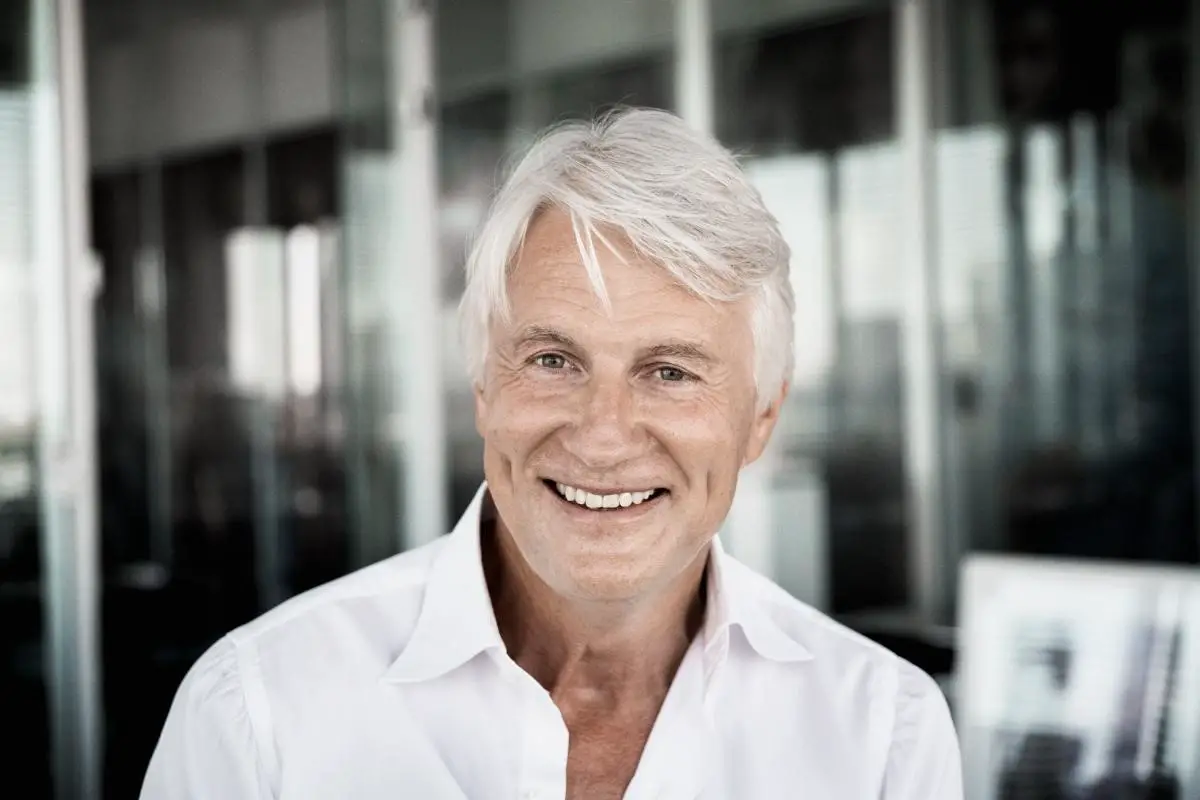European Prize for Architecture Winner 2022, German Architect, Prize News
2022 European Prize for Architecture Winner
9 September 2022
Christoph Ingenhoven Europe’s Champion Of Eco-friendly Green Architecture Named The Laureate Of The 2022 European Prize For Architecture
European Prize for Architecture 2022 News
The German architecture office, Ingenhoven Architects is presented this year with what is known internationally as Europe’s Highest Award for Architecture by The European Centre for Architecture Art Design and Urban Studies and The Chicago Athenaeum: Museum of Architecture and Design at a Gala Dinner Award Ceremony at the foot of the Acropolis in Athens, Greece on September 9.
Christoph Ingenhoven architect:
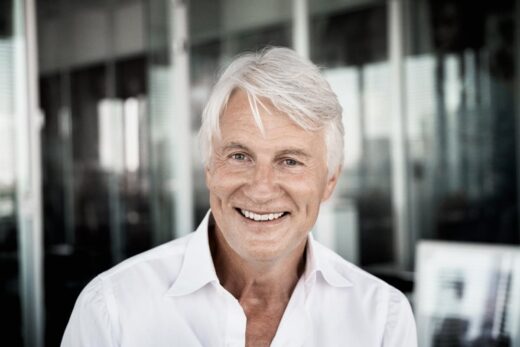
Christoph Ingenhoven, Europe’s leading architect committed to sustainable and ecological architecture, has been selected as the 2022 Laureate of the European Prize for Architecture, announced architecture critic Christian Narkiewicz-Laine, President, The Chicago Athenaeum: Museum of Architecture and Design, which sponsors the award that is regarded internationally as Europe’s highest design honor.
Ingenhoven Architects is an international architectural firm based in Düsseldorf, Germany.
Founded in 1985, the office has become notable and celebrated for its ecologically oriented designs for high-rise buildings with a focus on creating designs with an ecological core.
Ingenhoven’s major international projects include 1 Bligh in Sydney (2006), the European Investment Bank in Luxembourg (2002-2008), Lufthansa Headquarters at Frankfurt Airport, Frankfurt (2005), the Breezé Tower in Osaka (2008), Stuttgart 21 Project, an extensive redesign of Stuttgart’s main train station (ongoing since 2010), Kö-Bogen II in Düsseldorf (2014-2020), and Toranomon Hills in Tokyo (2020).
His largest project thus far has been Marina One in Singapore (2017), which covers an area of over four hundred thousand square meters.
Completed in 2018, this high-rise complex comprises two office and two residential towers, with public garden in the center.
“For two decades, Christoph Ingenhoven has been a pioneer for a green architecture and an eco-friendly philosophy sustainable to the earth and to the clients and public who live, work, congregate, and socialize in his buildings,” states Narkiewicz-Laine.
“His buildings demonstrate beauty, modesty, boldness and invention as the foundation and basis of his practice.”
“He is also a champion, rather tour-de-force, of moral and ethical architecture, absolutely committed to sustainable and ecological architecture as the launching point for his designs.”
“His works embody a moral commitment and conviction to improve the microclimate of the city, supporting biodiversity, and fostering people’s general wellbeing.”
“Elegance, efficiency, the economical use of resources, and a high degree of aesthetic quality and innovative technology also characterize his works and are all part of his philosophy.
“For Ingenhoven, this aspect of the project’s performance is part and parcel of his larger sustainability and urban place-making goals.”
“In 1997, long before ‘Green’ was officially and globally embraced, his architectural office received international recognition for the design of one of the first ecological skyscrapers worldwide, the naturally ventilated double-skin RWE tower in Essen.”
“There is also a moving poetic quality found in Ingenhoven’s sustainable designs with their voluminous green façades and where sun and light filter into his buildings, sky gardens, courtyards, and intermediary spaces overcoming the harshness of our urban world.”
“As one of Europe’s most influential architects practicing today, as well as moralist and advocate for sustainability, Ingenhoven by far gracefully upholds the mission of the European Prize,” Narkiewicz-Laine continues.
Each year, The European Prize for Architecture is awarded jointly by The European Centre for Architecture Art Design and Urban Studies and The Chicago Athenaeum: Museum of Architecture and Design to architects who have made a commitment to forward the principles of European humanism and the art of architecture.
Stuttgart Main Station by Ingenhoven Architects, Stuttgart, Germany, (ongoing since 2010).
European Investment Bank by Ingenhoven Architects, Luxembourg, 2002-2008. Photograph by. Andreas Keller
The European Prize for Architecture is not a “lifetime of achievement award,” but rather serves as an impetus to support new ideas, to encourage and foster more challenge-making and forward-thinking about buildings and the environment, and to prompt the pushing of the envelope to obtain an even greater, more profound result.
The Prize also honors the commitment and achievements of the best European architects who have determined a more critical, intellectual, and artistic approach to the design of buildings and cities.
Previous Laureates include: Bjarke Ingels (Denmark), Graft Architects (Germany), TYIN Architects (Norway), Marco Casagrande (Finland), Alessandro Mendini (Italy), Santiago Calatrava (Spain/Switzerland), LAVA Laboratory for Visionary Architecture (Germany), Manuelle Gautrand (France), Sergei Tchoban (Russia/Germany), Henning Larsen Architects (Denmark), and Wolfgang Tschapeller (Austria).
Last year, The European Prize for Architecture was given to Francine Houben and Dick van Gameren of the Dutch firm Mecanoo.
Christoph Ingenhoven comes from a family of architecture.
He was born in 1960 in Düsseldorf and studied Architecture and art history at RWTH Aachen from 1978 to 1984. Subsequently, he graduated in 1981 from the Art Academy, Düsseldorf where he studied under Austrian architect Hans Hollein.
In 1985, Christoph Ingenhoven set up his own practice under the name of Ingenhoven Architects and is based in Düsseldorf.
Until 2003, the company was formerly named Ingenhoven Overdiek and Partner.
He is a founder member of the German Sustainable Building Council (DGNB) and the Federal Foundation for Building Culture.
In addition, he is a member of the North Rhine-Westphalia Academy of Sciences and Arts.
Using the term supergreen®, the practice pursues a comprehensive sustainability concept.
It develops and builds projects of any size and typology in almost all parts of the world—all in accordance with the highest green building standards, such as those of LEED, Green Star (Australia), BREEAM (GB), DGNB (Germany), and CASBEE (Japan).
“Supergreen means much more to us than urban greenery,” states Ingenhoven.
“Humanity is currently undergoing the largest population shift in its history—moving from the countryside to the cities.”
“With that and the growing population, the only alternative is larger, denser cities. We need to equip our cities so they can accommodate even more people. We need cities that are both dense and mixed.”
Ingenhoven’s first international breakthrough project 1 Bligh in Sydney (2006), developed with the local firm Architectus, is a 139-meter-tall office tower that offers unobstructed views of the city’s beautiful harbor.
In addition to its spatial efficiency, the building boasts an ecological concept that is not only unique for Sydney, but also for the entire Australian continent.
The fully-glazed tower is equipped with a double-skin façade and ventilated by an atrium that rises the building’s entire height.
The building is the first high-rise tower to receive the highest Six Star certificate of the Australian Green Star environmental rating system.
Likewise, Ingenhoven’s award-winning European Investment Bank in Luxembourg (2002-2008) features an ambitious glass roof that soars over V-shaped office wings that are connected with atria and winter gardens.
The layout of the building relates to its context on all sides and fits naturally into the landscape.
The slope of the site is expressed inside the building with cafeterias and conference rooms arranged on internal terraces.
These atria connect the public areas at the ground level to the office levels above.
The site is urban on one side and landscaped on the other.
For its sustainability merits, the bank won an International Architecture Award in 2009 and a Green Good Design Sustainability Award in 2010 from The Chicago Athenaeum.
Other early low-energy office buildings designed by the office soon followed including Lufthansa Headquarters in Frankfurt (2006), which won an International Architecture Award in 2008.
Lufthansa HQ at Frankfurt Airport by Ingenhoven Architects, Frankfurt AM, Germany, 2005. Photograph by Hans-Georg Esch.Lufthansa HQ at Frankfurt Airport by Ingenhoven Architects, Frankfurt AM, Germany, 2005. Photograph by Hans-Georg Esch.
HQ of the Daniel Swarovski Corporation by Ingenhoven Architects, Feldmeilen, Switzerland, 2011. Photograph by Andreas Keller.
Another pivotal example of sustainability, The Stuttgart 21 Project, an extensive redesign of Stuttgart’s Main Train Station (ongoing since 2010) won in a competition in 1997, is one of the largest infrastructure projects in Europe.
Future plans for the new central station include the construction of a new underground station concourse, conversion of the historic station building, design of the open spaces around and above the new station, and the relocation of the Staatsgalerie light rail station, plus the construction of a new technical building and a supply and disposal building.
According to the plan, The Schlossgarten (Palace Garden)–the green heart of Stuttgart’s most important public green space–will be significantly expanded and more strongly integrated into the city by relocating the tracks.
The project won an International Architecture Award from The Chicago Athenaeum in 2007.
In Singapore, the design for Marina One (2017), a collaboration with Architects61 and landscape architects Gustafson Porter + Bowman and ICN Design International for a total population (office workers and residents) of around 20,000 people across a 24-hour cycle, gives a sustainable glimpse into a model for building in tropical megacities and a possible vision for future urbanism.
At Marina One all these factors come together to indicate what a new form of urbanism could be.
Sites of this size demand subdivision: vertically into a podium which may have several levels for car parking, retail or other activities that can use deep-plan space, and then spaces for living and working above, which are differentiated from each other by their position on the horizontal plane.
The four buildings expand towards the top, with the two office towers merging on their upper levels to make 10,000m2 floorplates on levels 28 and 29.
The jungle-like atmosphere—with a total of 350 tropical plant species—begins in the central green area on the ground floor and continues upwards through the first four floors, interspersed by pools of water and pathways. These are followed by the Sky Gardens on the 4th and 15th floors and the roof.
This shades the “heart” of the project without compromising its greenness—most of the plants need no more than a few hours of sunlight a day, preventing the building fabric from becoming too homogeneous and encouraging it to adopt a variegated form for sufficient solar penetration.
The project also takes advantage of the “vacant” nature of the site.
There is no natural ground level, or a context to generate one, so what might typically be ground-floor functions are spread over three levels, with the offices and apartments starting on level 4.
There are approximately 60 species of trees and 160 varieties of ground-level plants, spread around the building’s numerous pockets of green.
For the oval-shaped Freiburg Town Hall (2017) in Freiburg, Germany, Ingenhoven produced the world’s first public net-surplus-energy building—generating more energy than the building consumes.
Featuring façades from locally sourced larch wood elements, the administration center and day nursery is the world’s first public building built to the net-surplus-energy standard and accommodates the 840 employees of the City Administration.
The façade of the town hall had been constructed using staggered, vertically projecting modules with photovoltaic cells and high-quality thermal insulation.
Story-high glazed facade elements are used to optimize the intake of daylight.
The ensemble of the new town hall buildings is integrated into the green space between Eschholz Park and the University Hospital—the linking effect is reinforced by vistas and a public pathway network.
Ingenhoven’s Kö-Bogen II in Düsseldorf (2014-2020) is perhaps the firm’s most visible and publicized “green” project where the building’s volume is totally enveloped in hornbeams, along with a smaller sloping lawn-topped structure, to define a new entry for the plaza that is also home to the state theater and an office tower.
The 90-foot-tall off-kilter box shrouded in precisely clipped shrubs is a living sculpture or some kind of oversized topiary.
The mysterious volume at the plaza’s southern edge is, in fact, enveloped in nearly 30,000 hornbeam hedges; and, if laid end to end, they would stretch nearly five miles, making the installation Europe’s largest green façade.
The residential and commercial development has a junglelike profusion of tropical vegetation that grows within a central court and from terraces and rooftops.
Kö-Bogen II and Düsseldorfer Schauspielhaus by Ingenhoven Architects, Düsseldorf, Germany, 2020. Photograph by Hans-Georg Esch.
Christoph Ingenhoven
1 Bligh Street by Ingenhoven Architects and Architectus, Sydney, Australia, 2011. Photograph by Hans-Georg Esch.
In Düsseldorf, Ingenhoven Architects has taken a more controlled approach, selecting the hornbeam, a native coniferous tree whose leaves turn brown in the fall but stay on the branches all year round.
These shrubs have been groomed to maintain a rectilinear profile and create a manicured—or what firm founder Ingenhoven calls a “dominated”—version of nature.
The project won a 2021 Green Good Design Sustainability Award from The Chicago Athenaeum.
Next door is Ingenhoven’s Düsseldorfer Schauspielhaus (2020), a major architectural heritage project from 1960, where the façade and roof, the latter now covered with greenery, were sensitively renovated, as were the areas relevant to the public, including lighting and furnishings. Contemporary additions were elegantly restrained in matt black.
One motivation for all the greenery was to refer to a beloved nearby park, the Hofgarten, while lending the mixed-use complex an expression distinct from two landmarks that also border Gustaf-Gründgens-Platz—the Dreischeibenhaus, a 25-story Miesian office tower, and the Schauspielhaus (1970), an organically curved state theater that Ingenhoven Architects is currently renovating.
In reference to Kö-Bogen II, Ingenhoven states: “We didn’t want to compete with the two icons. The third building on the plaza had to be completely different.”
Düsseldorfer Schauspielhaus also won an Honorable Mention in the 2022 International Architecture Awards.
A more current sustainable project is Toranomon Hills (2020) in Tokyo with its lushly planted pedestrian decks fan out from the central tower.
The terraced decks create a stepped urban landscape and an area for exchange and movement, bringing the greenery of the surrounding gardens of the historic Atago Shrine up and onto the buildings.
The resulting design is an international hub for businesses, residents and visitors alike, based on the Ingenhoven Architects and developer Mori Building’s shared urban vision of the “vertical garden city.”
Planting on the rooftops also help reduce the urban heat island effect, while also enhancing the buildings’ appearance when seen from above.
Freiburg Town Hall by Ingenhoven Architects, Frieberg, Germany, 2017.
Düsseldorfer Schauspielhaus Renovation by Ingenhoven Architects, Düsseldorf, Germany, 2020. Photograph by Sebastian Hoppe
All of Ingenhoven’s projects signal a new turning-point in Green Architecture in Europe and the world, where sustainability has become a crucial and commonly known term in living architecture and design.
“As architects, we have to ask what our buildings do for the city,’ he states.
“We can’t do things merely because they are beautiful.”
“And Ingenhoven is a doer; not just a thinker or an arm-chair philosopher who simply ‘greenwashes’ his buildings as an ambitious marketing ploy,” continues Narkiewicz-Laine.
“This European architect is dead serious about what he designs. And he means business.”
“In a 2014 interview with ERCO, the sleek, high-tech German lighting company, Ingenhoven states: ‘The question of how we will manage to get away from spectacular formal experiments and arrive at a relaxed, radically new, materially experimental architecture. In other words: Bauhaus not Blob. Slow architecture instead of fast architecture. Very Special instead of XXL’.”
Christoph Ingenhoven is the 17th Laureate of the European Prize for Architecture.
The formal ceremony and gala dinner for what has come to be known throughout the world as Europe’s highest honor for architecture will be held at a Gala Dinner at the foot of the Acropolis in Athens, Greece—the birthplace of Western Architecture—on Friday, September 9, 2022.
Ticket information is available through The European Centre’s Museum in Athens at +30/210 342 8511 or in the U.S. at +1/815-777-4444 or by email at [email protected].
An exhibition “Ingenhoven Architects” opens at Contemporary Space (74 Mitropoleos Street) in Athens that same evening and continues through October 23.
The Chicago Athenaeum
The Chicago Athenaeum is a global nonprofit education and research institute supported by its members. Its mission is to provide public education about the significance of architecture and design and how those disciplines can have a positive effect on the human environment.
The European Centre for Architecture Art Design and Urban Studies
The European Centre for Architecture Art Design and Urban Studies is dedicated to public education concerning all aspects of the built environment – from entire cities to individual buildings – including the philosophical issues of arts and culture that ultimately give the final shape to design. A high emphasis exists on contemporary values and aesthetics, conservation and sustainability, and the theoretical exploration and advancement of art and design as the highest expression of culture and urbanism.
Ingenhoven Overdiek Kahlen Partner
Previously on e-architect:
European Prize for Architecture 2021 News
Francine Houben And Dick Van Gameren Of The Netherlands-based Mecanoo Receive The 2021 European Prize For Architecture
European Prize for Architecture 2021
Francine Houben of Mecanoo Architecten:
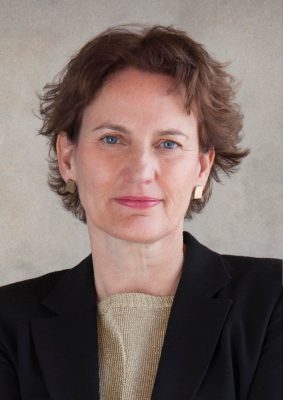
photo courtesy of architects office
Dick van Gameren of Mecanoo Architecten:
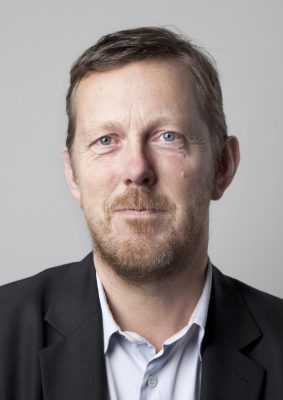
photo courtesy of architects office
The Library of Birmingham, Birmingham, United Kingdom, 2013:
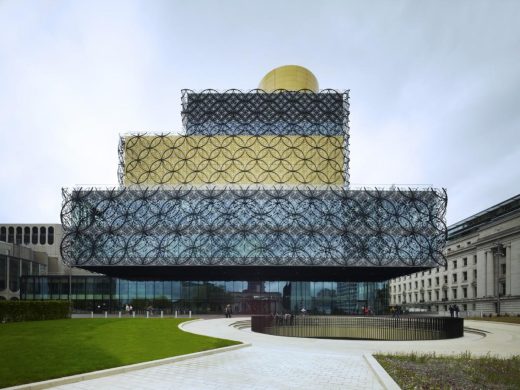
photo courtesy of architects office
The European Centre for Architecture Art Design and Urban Studies, 28 Butlers Court, Sir John Rogersons Quay, Dublin, 2 Ireland
The European Prize for Architecture
The European Prize for Architecture Winners
2020 Laureate of The European Prize for Architecture
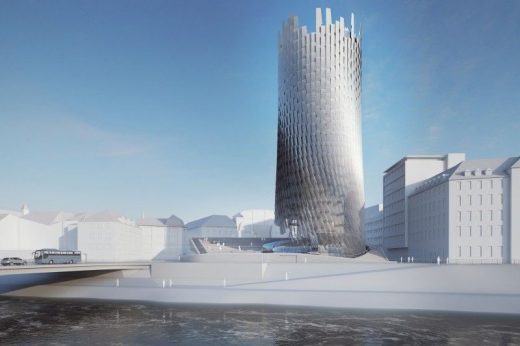
Andreas Hofer Platz, Graz, Austria, 2013
European Prize for Architecture 2020
2019 Laureate of The European Prize for Architecture
Henning Larsen Architect
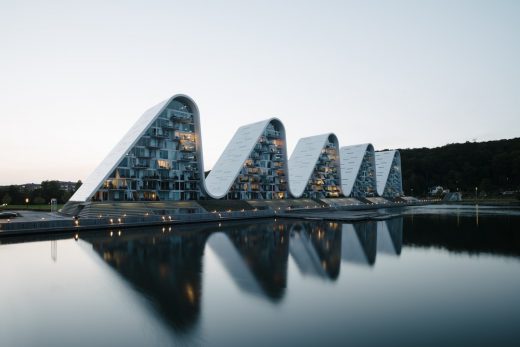
photography: Jacob Due
European Prize for Architecture 2019
2017 Laureate of The European Prize for Architecture
Manuelle Gautrand
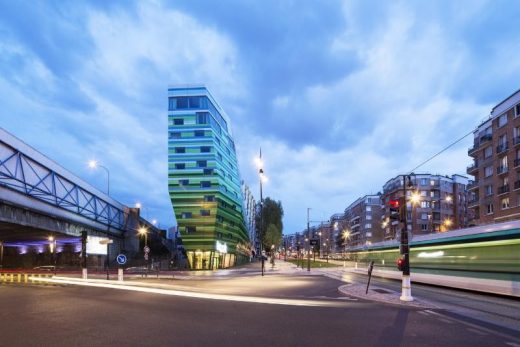
image courtesy of architects
European Prize for Architecture 2017
European Prize for Architecture
European Prize Architecture 2012
Website: European Prize for Architecture Nominations
European Architecture Awards
Europe 40 Under 40 Award
Europe 40 Under 40
Europa Nostra Award – winner news
European Copper Architecture Awards
European Architecture Competition : 2nd European Prize for Urban Public Space met in Barcelona
Architecture Awards
Comments / photos for the 2022 European Prize for Architecture page welcome

